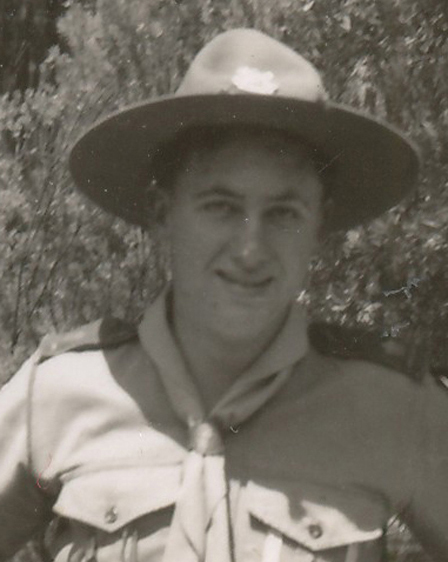
Patrol Leader Paul Francis
By Ilma Hackett, Balnarring & District Historical Society
It would be a huge understatement to say Paul Francis enjoyed his scouting activities. The young lad’s enthusiasm was boundless.
Scouting days begin
Paul and his family lived at Balnarring Beach and he was introduced to scouting in 1944. When George Smith, Scout Master of the 1st Flinders Troop, started a patrol at Balnarring Paul was one of the first to join. Balnarring’s population was too small to have a scout troop and Smith was putting into practice an idea he had seen in the U.K. This was to set up a patrol in smaller towns that were attached to a larger troop already in existence in a larger centre. At first there were four boys of scouting age in the Balnarring Patrol and seven younger lads, including Paul’s brother Bryan, who formed a Cubs’ group.
Every month Smith came to Balnarring Beach from his home in Sorrento to lead the new patrol which met in the shelter shed on the foreshore at Balnarring Beach. This patrol lasted for four years until poor health forced Smith to close, not just the Balnarring Patrol, but the 1st Flinders Troop as well.
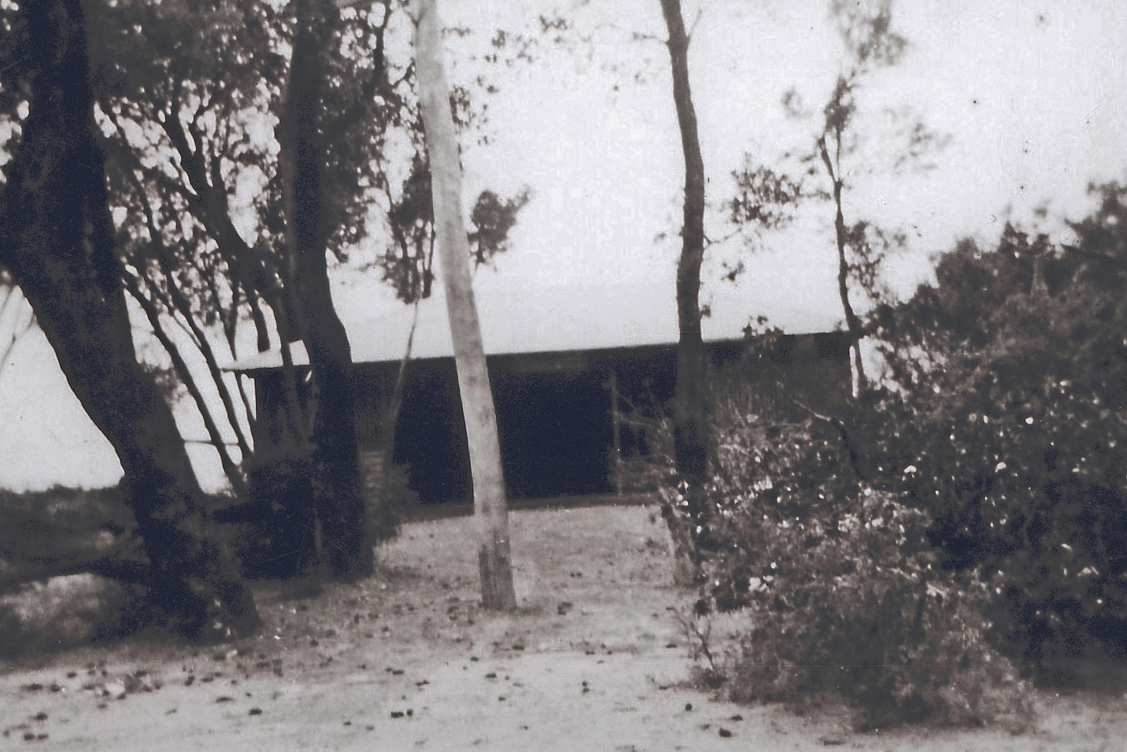
Shelter Shed at Balnarring Beach, home to the 1st Balnarring Patrol
Lone Scout set up
However, Paul and his younger brother, Bryan, found a way to continue as Scouts. This was through the Lone Scout movement. This organization allowed boys who lived too far from a scout troop to participate in scouting activities. Headquarters were in Melbourne and the state was divided into tribes with a scout master for each tribe. The main scout leader was the Commissioner for Lone Scouts. Balnarring Beach was part of the Kullah tribe and their scout master was Elwood leader, Peter Stanley. Three or more boys were needed to form a patrol and in early 1949 when Peter Edwards, another local lad, turned 11, the three formed a Lone Scout group. The boys adopted the name the Balnarring Beach Seal Patrol. An adult was needed to advise and oversee. Howard Francis, Paul and Bryan’s father, volunteered for the role. He was an excellent advisor; not only was he a school teacher but he had a deep interest in nature and he encouraged his young charges to explore and learn about their environment.
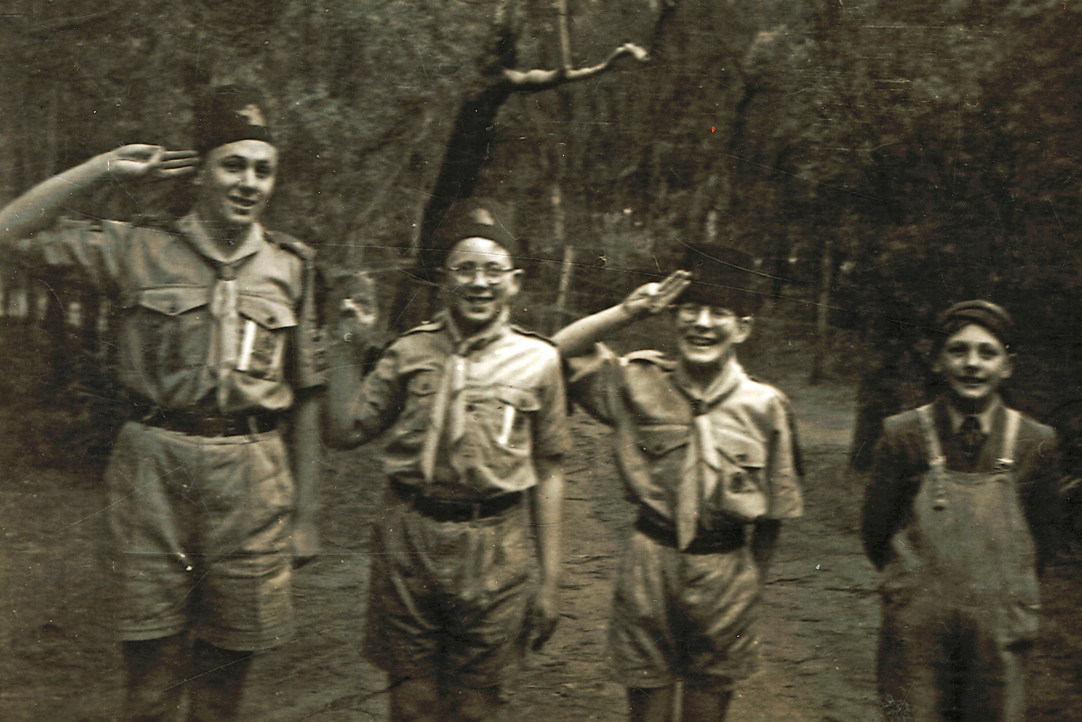
Balnarring Beach’s Seal Patrol. (l to r) Paul Francis, Bryan Francis, Peter Edwards, David De Winne
The Patrol met every week and the boys, with Paul as their Patrol Leader, ran things themselves along the lines established by the founder of the scouting movement, Lord Baden Powell. Scouts were expected to work toward obtaining a series of badges: 2nd Class Badge, 1st Class Badge, Bushman’s Thong and ultimately, King or Queen’s Scout. The boys had to pass Proficiency badges in various fields in order to attain each level.
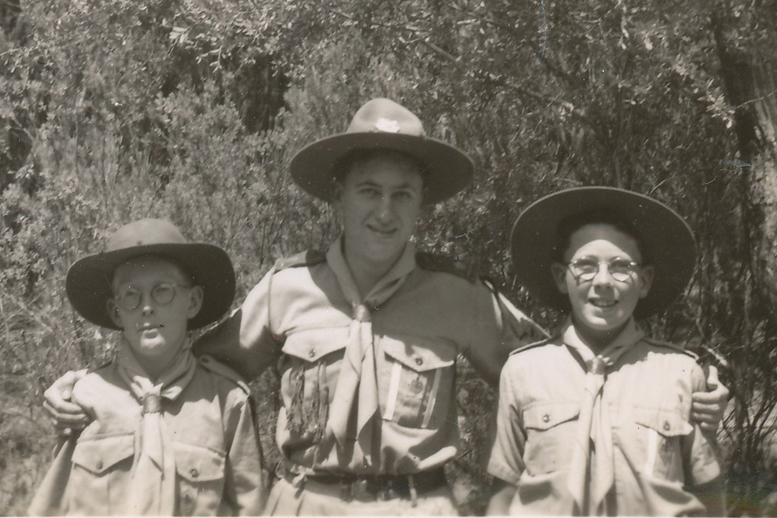
Paul (centre) with Peter Edwards (left) and Bryan Francis (right)
A nature playground
Balnarring Beach, at that time, had a small permanent population and houses were clustered around the store and the Hansens Lane area. The beach with its reef and rockpools was at their doorstep. The foreshore was mainly bushland, a nature reserve covered with thick stands of ti-tree and huge banksias and gums. At dusk an abundance of nocturnal wildlife could be observed. A creek ran through the reserve, turning to flow parallel to the coast towards Somers. The area made a perfect adventure playground and the boys spent their time outdoors, notebooks in hand, compiling long lists and records of birds, animals, plants and sea creatures.
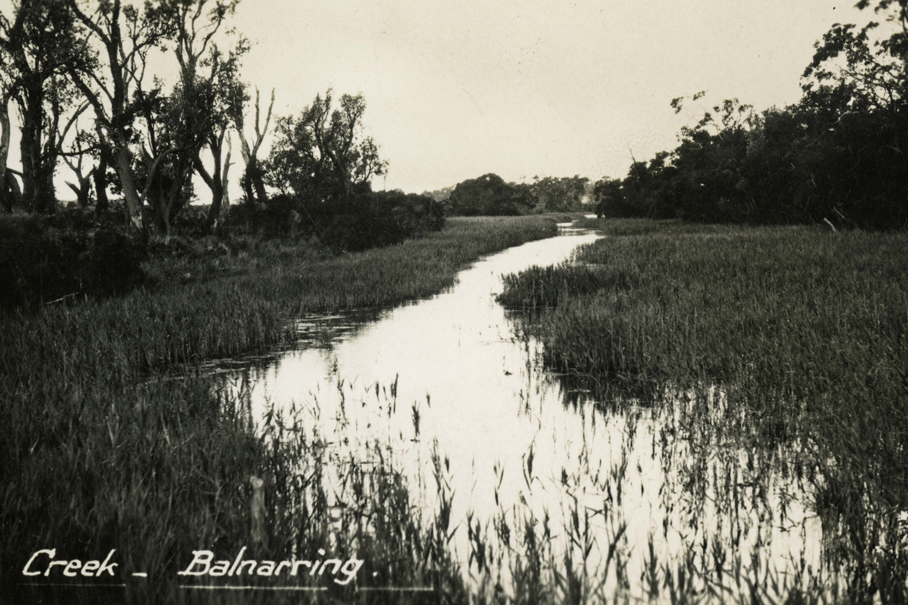
Merricks/Tulum Creek
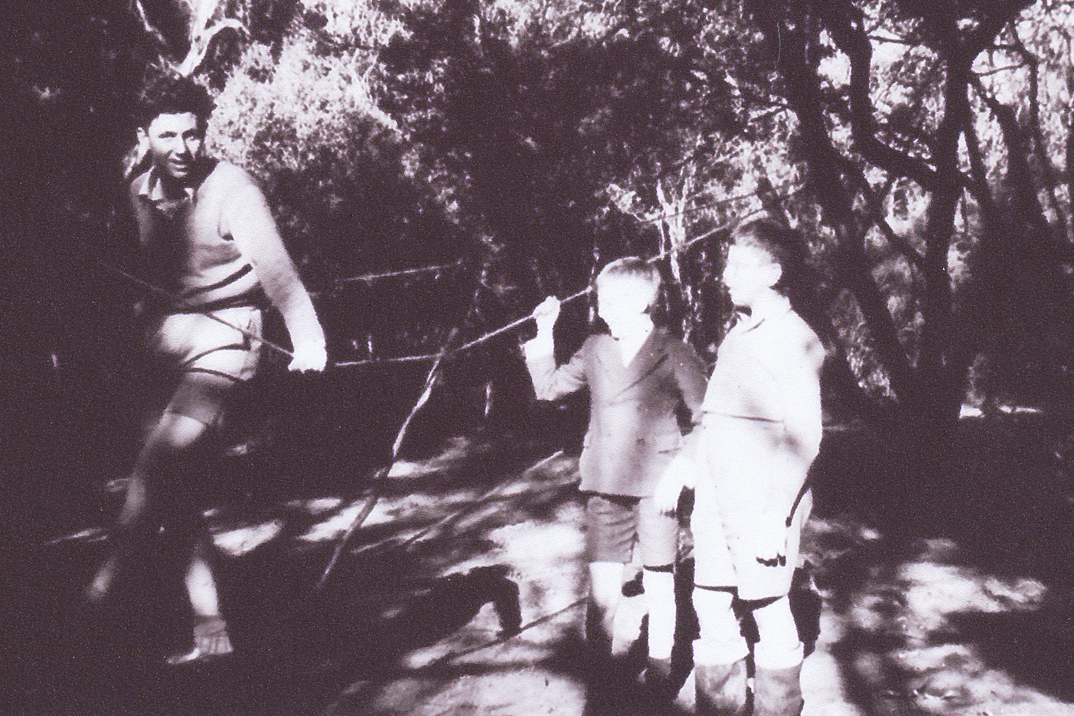
Paul tries their rope bridge
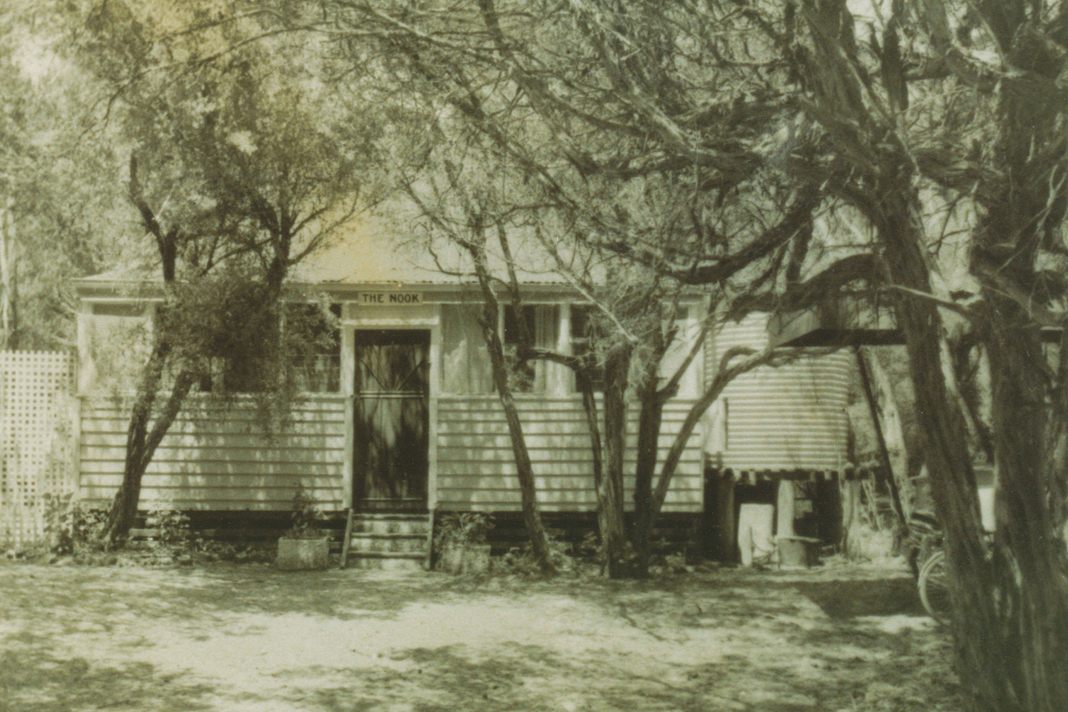
‘The Nook’, the Francis home at Balnarring Beach
The Seals competed in the monthly competitions run by the Lone Scout section. These were against the five other Lone Scout patrols in their section and tested initiative, scouting knowledge and practical application. They entered the competitions with enthusiasm and did well. One of their winning entries was a list of thirty-eight native plants, correctly identified with their botanical as well as their common names. The boys made rope bridges and scaled the slopes of Palmers Hill. A flying fox was set up. They examined the midden at the base of the cliff and explored the cave in the rock face near Merricks Beach. One of their projects, to build a raft and sail along the creek to Somers, came to an untimely end when the raft broke apart and sank after floating for about 100 metres. The Seals meeting place was in an underground cubby they had dug in the back yard of the Francis home. It was roofed and even had a fireplace.
Every Easter the Balnarring Beach patrol went to a camp for all the Victorian Lone Scouts. This was held at Gilwell Park in the Dandenong Ranges and was eagerly anticipated each year.
Periodically their Scout Master came from Elwood to monitor their progress and test individuals for various badges. Paul worked diligently to pass the tests for his badges and by November, 1949 he had qualified for the 1st Class Badge. He was presented with this on 26 November, his 14th birthday. As Patrol Leader he set an example to the younger members of the Seals and he encouraged them to pass their proficiency badges. The Patrol thrived on scouting. Scouting gave purpose to their outdoor adventures and they could take pride with each badge they added to those they already had. The Seals often lead the monthly competitions against other Lone Scout Groups and they were the proud overall winners of the monthly competitions for three years in a row.
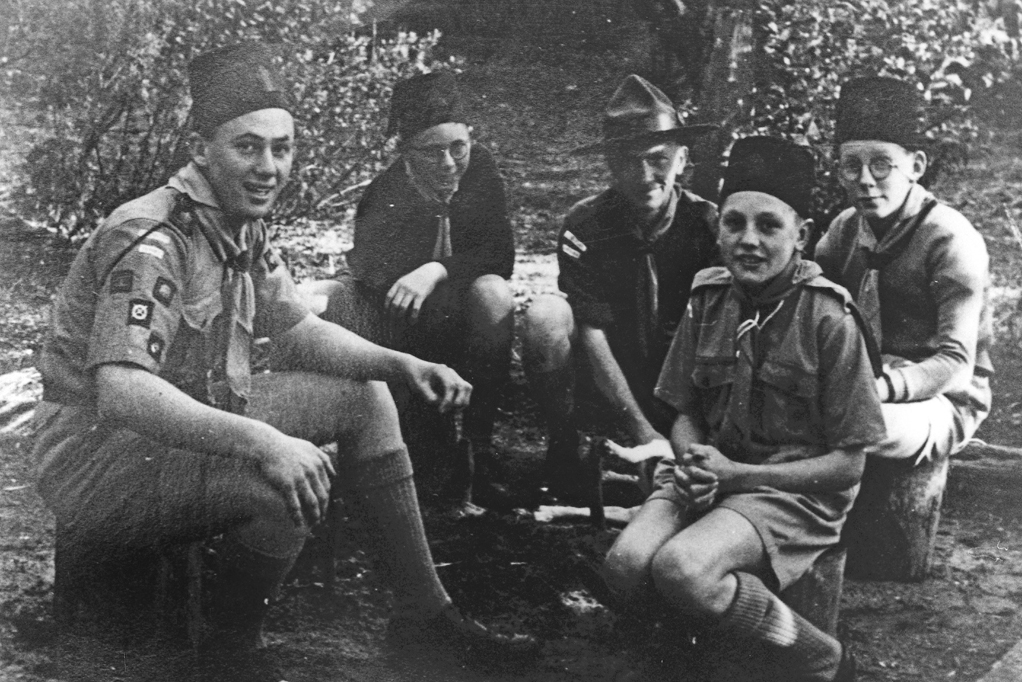
The four members of Balnarring Beach Seal Patrol wearing their fezzes with visiting Scoutmaster Peter Stanley
Sun Youth Travel representative
In March 1951 Paul became the first Victorian Lone Scout to travel to Europe as a representative of the Flinders Shire in the Sun Youth Travel Scheme. It was the first time a Lone Scout from Victoria would travel to Europe. Before Paul left he was inducted as a Senior Scout (15 to 18 year age group). This showed his level in the Scout movement. An excited lad left for Europe. While he was overseas he was frequently asked about the Lone Scout movement. People knew he was a Lone Scout but few understood what that meant and Paul was happy to explain.
At the end of that year Paul penned a prize-winning essay about the places he visited on his travels. He was awarded five guineas (£5/5/-) and the essay appeared in print. He wrote, “as a scout, one of the highlights was a visit to Imperial Scout headquarters and to Gilwell Park”.

The Governor farewells the Queen’s Scouts (The Age, 17 April, 1953)
While he was away his brother, Bryan, led the Seal Patrol which now had a fourth member, David De Winne. David had come to live at the store and he quickly became one of the group even though he was not yet eleven. Paul brought back a present for each of them. While passing through the Suez Canal he bought several fezzes in Cairo when the ship stopped at Port Said. Back home, his mother attached to each red headpiece a black Seals logo with a red eye. The patrol proudly wore their fezzes with their uniform.
In July 1952 the Scout leaders from Melbourne came down to Balnarring to supervise Paul in his final tests for the Queen’s Scout Badge, then to tell him that he had been successful. Paul was presented with his certificate by Victoria’s Governor, Sir Dallas Brooks on 11 October, 1952. He was the first Lone Scout to become a Queen’s Scout. It was a tremendous achievement and distinction.
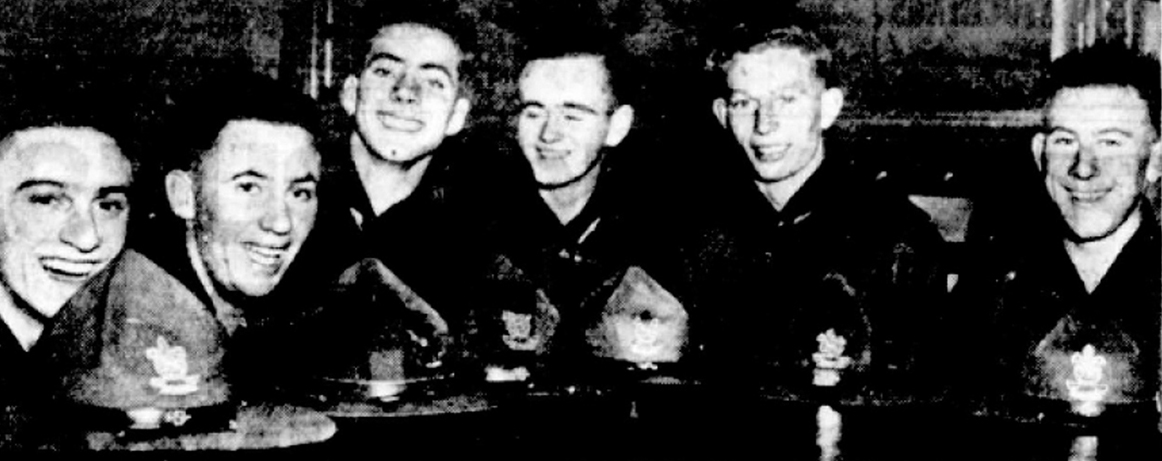
Victoria’s Queen’s Scouts chosen to attend the Coronation. Paul Francis second from left (from the Herald Newspaper)
Selected to attend the Coronation
The following year, 1953, brought the Coronation of Queen Elizabeth II. Paul was selected, one of fourteen Queen’s Scouts from Australia to attend. The group, supervised by Commissioner A.G. Oldham, sailed aboard the liner Orion, nicknamed “the Coronation Ship” as most of the passengers were bound for the Coronation. The passage to England presented many new experiences at each of the ports where the ship called and the Scouts were well entertained along the route.
Then, as Paul recalled, “on 2 June, 1953, we stood outside Westminster Abbey to see the Queen and everyone in the procession, go into the Abbey.” One of the Scouts had an invitation to enter the Abbey. The others had been positioned in Parliament Square which gave an unobstructed view of the front of the Abbey. As impressive as the Coronation was, Paul’s lasting memories were of the magnificent buildings he saw in London.
The six weeks the Scouts spent in Europe were crammed with different experiences and new opportunities. The Australian Scouts travelled to Scotland where they were guests at Rowallan Castle near Glasgow, the home of Lord Rowallan, the Chief Scout of the British Commonwealth. In France they were billeted with English-speaking French Scouts who were happy to show them the sights of Paris. The European trip included a visit to Holland.
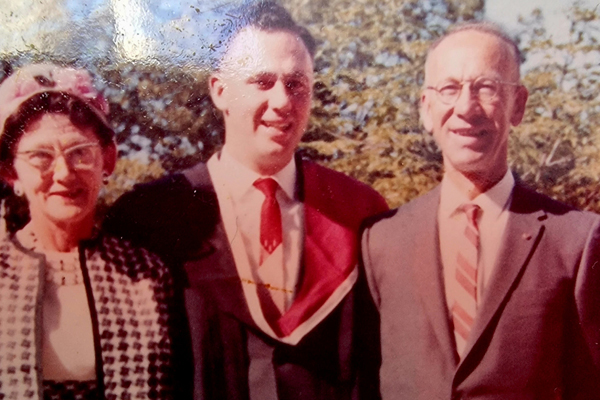
Graduation day, 1961. Paul with his parents
Highlights of the trip
Two events stood out for Paul. One was the Spithead Review. This Review of naval vessels was held on 15 June and the Australian Queen’s Scouts were in attendance. The program for the day started at 8 o’clock in the morning and ended at midnight. Two hundred and seventy ships took part, one third of these being from Commonwealth countries. The Australian Scouts were aboard H.M.A.S. Sydney. The Australian Prime Minister, R.G. Menzies and the Duke of Gloucester, were among those aboard the Sydney. The Queen and Duke of Edinburgh took several hours to complete the Review, cruising in H.M.S. Surprise between the lines of assembled ships. Activities of the day included a fly past by aircraft and, at night, an illumination of the ships, together with fireworks.
The second event was the Jamboree at Sandringham, the Queen’s estate in Norfolk. The Jamboree was organized for approximately 3,000 Scouts from Norfolk, Suffolk and Cambridgeshire, and overseas Scouts. The Australians were the guests of the 23rd Cambridge Troop. Held over five days it was a memorable camp, as reported in one local newspaper, “one of the finest that has ever been held with bright, sunny weather which seemed to arrive just when it was needed”.
It was a very full six weeks for the Australians who returned home on the passenger ship, Strathnaver, at the end of their stay in Europe.
The Lone Scouts Seal Patrol disbands
Not long after Paul’s return from London the Francis family moved house from Balnarring Beach to Rosebud. There both Paul and his brother continued their scouting days by joining the 1st Rosebud Sea Scouts. (Bryan also went on to become a Queen’s Scout.) Unfortunately, the Seal Patrol at Balnarring Beach had to disband as there were not enough boys to maintain the patrol after the Francis brothers’ departure.
Dr Paul Francis
Paul completed his secondary schooling at Frankston High School where, in his final year, he was Senior Prefect and Dux of the School. He then went on to study medicine at the University of Melbourne. During his student days Paul continued his involvement with the Scouts and acted as Assistant Scout Master to the 1st Rosebud Sea Scouts and to a Lone Scout tribe.
Paul married soon after graduation and his daughter was born in 1963. His first appointment was as registrar at Hobart Hospital, a position he held for three years. On returning from Tasmania, Paul entered private practice as a G. P. However, his interest in anaesthetics led him to specialize. A member of the NZ and Australian College of Anaesthetists he was subsequently appointed to a small government panel, charged with the responsibility of assessing the qualification of overseas doctors wishing to practise as anaesthetists in Victorian hospitals.
In the early 1990s Paul’s medical career took a new direction when he was appointed Medical Director of the Echuca Hospital. The hospital was a district hospital but during this time developed into a regional hospital offering specialist services. Paul also held the role of the hospital’s specialist anaesthetist. On leaving the hospital post he travelled for three years to surrounding towns as visiting medical director, finally retiring in 2017.
Dr Paul Francis died in June 2019, two years after retirement.
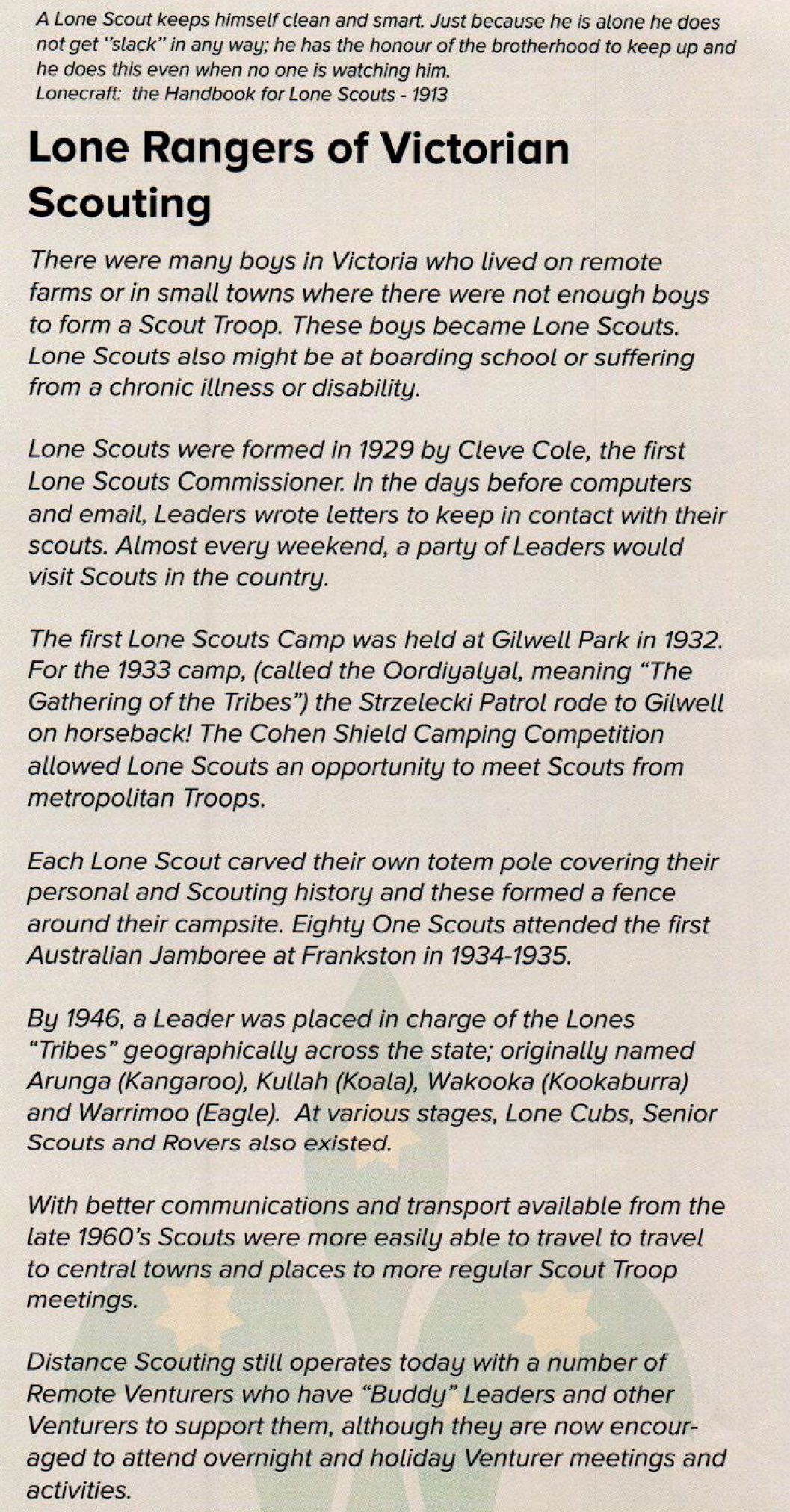
Document provided by Scouts Victoria
Acknowledgements:
“Balnarring Byways and Memories Vol 5”
“Scouting at Balnarring Beach” by Paul Francis.
Information from Bryan Francis.
Contemporary newspaper articles.
Article “Lone Rangers of Victorian Scouting”, courtesy Peter Datson, State Commissioner – Heritage, Scouts Victoria
Photos: Francis family collection, B.D.H.S. collection, Internet.





